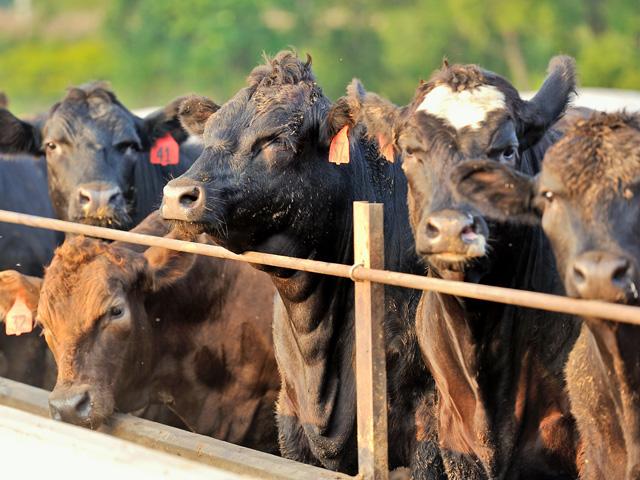Feeder Inventory Bursting
Expect Short-Term Price Pressure on Feeder Cattle, Calves as More Head Push Into Feedlots
Hitting the highest March inventory number since 1996, cattle and calves on feed for slaughter totaled 12.2 million in USDA's latest Cattle on Feed report.
Not only was this a high-water mark for the history of the USDA report, but it was a 1% bump over 2021 levels. The numbers focused only on feedlots with a capacity of 1,000 head or more.
Most of those head were being held in just four states: Colorado (1.12 million head), Kansas (2.51 million head), Nebraska (2.69 million head) and Texas (2.94 million head).
The report shows that a majority of those head are in the 700-to-799-pound range with the next-largest group being in the 800-to-899-pound range.
P[L1] D[0x0] M[300x250] OOP[F] ADUNIT[] T[]
What might this all mean for pricing and timing as calving season is well underway?
DTN Livestock Analyst ShayLe Stewart says it's important to note that in this dynamic and evolving market, there is only one thing driving this trend, and it's drought.
"Without moisture in much of the central U.S. and in the Western states, cattlemen have no other option but to put cattle in feedlots," she said.
Short term, these added numbers will put pressure on feeder and calf prices. But there is also the long-term view to consider, which Stewart says continues to be bullish.
"From a short-term sense, it's true that these numbers, coupled with higher feed prices, are undoubtedly affecting calf/feeder interests. Breakevens have become harder to configure with high inputs and a long list of unknowns plaguing the market, including war, interest rates, high fuel and corn prices, and drought," noted Stewart.
"But from a long-term perspective, we get a different view. We have the smallest cow herd since 2015, so we know that this year's calf crop will be significantly smaller than it was in years past. Anyone with feed available to them is buying up calves/feeders knowing that the return on their investment will pay dividends. It's important to keep in mind that when we're looking at the long game, anyone in a position to hold cattle and to feed cattle today is in a strong place when we consider the market."
Stewart urged cattle producers to try to find ways to take advantage of the opportunities ahead.
"Uncertain markets do add risk and volatility," she said. "But keeping a fundamental mindset and understanding how cycles affect the market's dollar share is really crucial. The U.S. cow herd is going through a mass liquidation phase. Don't overlook the opportunity that I believe we'll see in late 2022 and early 2023, due to those demand fundamentals."
Victoria Myers can be reached at vicki.myers@dtn.com
Follow her on Twitter @myersPF
(c) Copyright 2022 DTN, LLC. All rights reserved.





